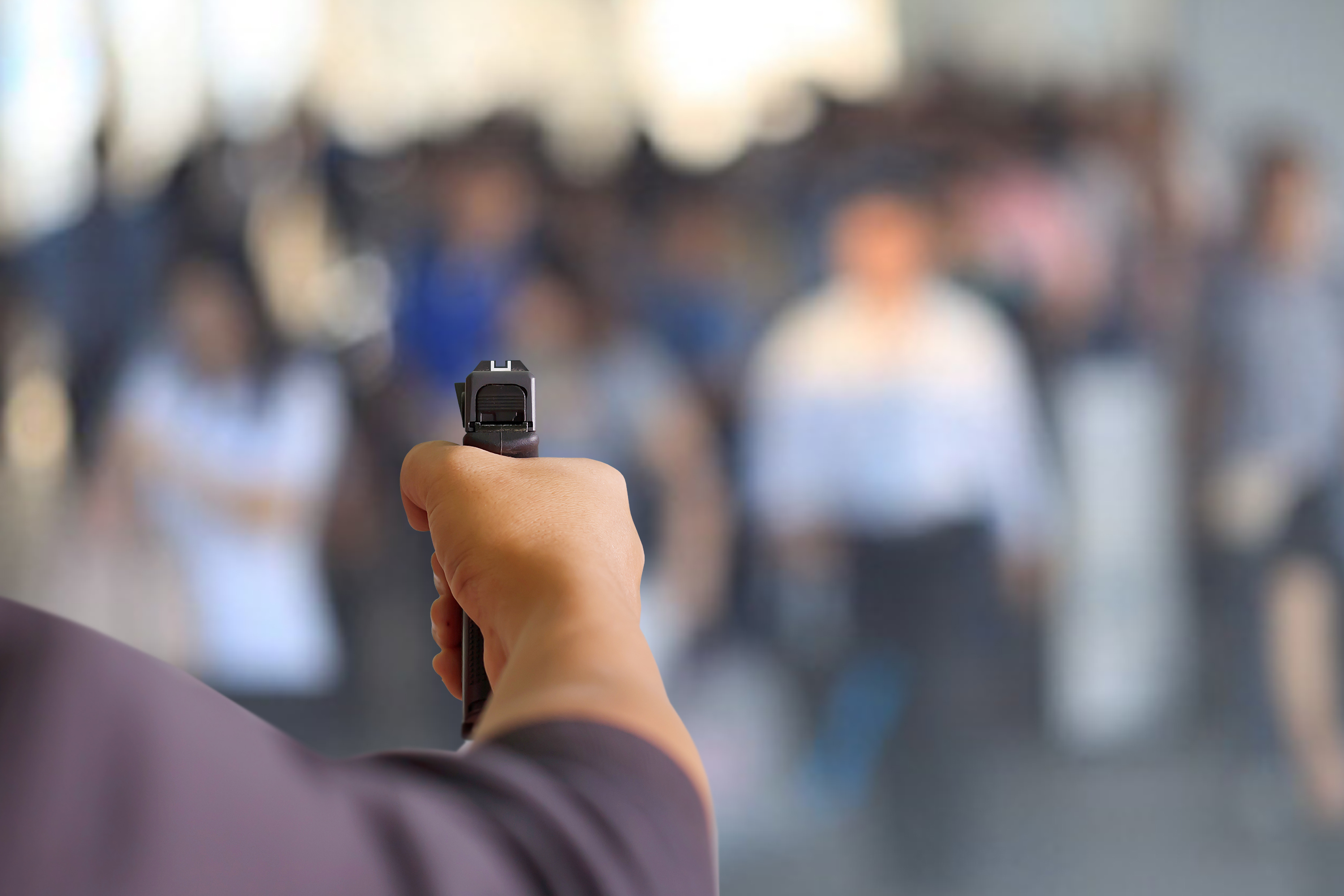
In the last year, “preparation” at many organizations focused on protecting health and safety in the pandemic.
As people gather again for in-person events and activities, preparation must include a renewed focus on other forms of safety — and ways to mitigate risk.
 Unfortunately, as recent events across our nation have shown, armed intruders are one threat organizations need to consider, along with measures for prevention and response. As the assistant vice president – Risk Control at Church Mutual Insurance Company, S.I. (a stock insurer)1, Guy Russ helps houses of worship identify and prepare for many different types of risk. Here, he answers common questions about armed intruder preparedness.
Unfortunately, as recent events across our nation have shown, armed intruders are one threat organizations need to consider, along with measures for prevention and response. As the assistant vice president – Risk Control at Church Mutual Insurance Company, S.I. (a stock insurer)1, Guy Russ helps houses of worship identify and prepare for many different types of risk. Here, he answers common questions about armed intruder preparedness.
How can we bolster our security – in general and specifically against armed intruder attacks?
There are many considerations for keeping your people and property safe, but here are foundational steps you can take.
Physical spaces and systems
- Control the access points to your building, ensuring all are locked or monitored. Keep exits clear.
- Complete regular checks of locks, doors, security cameras, lighting, alarms and gates. Fix anything that doesn’t work immediately.
- Make your security measures — including equipment and personnel — visible and obvious.
Communication
- Equip security personnel to communicate easily with each other from anywhere on your property.
- Keep members and staff informed on your security processes and procedures.
Training
- Implement a workplace violence prevention program and train all staff and volunteers.
- Conduct armed intruder drills on a regular basis, just like fire drills.
- Include law enforcement officers in your training and provide them a facility map.
What are our options for security personnel? What kind of liability will we have?
There are two categories of security personnel, and the options within each have varying levels of liability. Unarmed security often is comprised of volunteers or employees who are trained to watch for suspicious behavior. This option can be useful for avoiding potentially violent situations through early warning to authorities.
Armed security personnel typically represent one of the following: local law enforcement, private security contractors or volunteers. If you hire law enforcement, the individuals will be trained and assume their own liability. For private security contractors, your contract must specify that they will assume liability for their actions. A volunteer team carries the most significant liability risk and must be painstakingly vetted and trained.
Before deciding on any of these options, you need to review your organization’s resources and the needs of the people you serve. Your insurance carrier can help you understand how different options affect your current coverage; some options may require additional coverage. You should also consult legal counsel.
How can we prepare for an active shooter scenario?
Experts such as the ALICE Training Institute help organizations prevent, mitigate, respond to and recover from incidents such as an armed intruder attack. This includes the basic tenets of response during an incident, captured in the ALICE acronym:
Alert — Recognize the signs of danger and take all alerts seriously.
Lockdown — If evacuation is not a safe option, barricade entry points into your room.
Inform — Communicate information to others in the building as clearly as possible.
Counter — As a last resort when confronted with an armed intruder, create noise, movement and other distractions to reduce a shooter’s ability to aim accurately.
Evacuate — Leave the area through doors, windows or other exits.
If community members want to help with security efforts, how might they contribute?
Members of your community can help find and evaluate information about concerning conversations or activities. Statistics show that individuals considering carrying out an act of violence may talk to others about their plans, both online and offline. Here are three ways you can proactively look for potential threats:
- Create a reporting system — Some people may be comfortable approaching church leadership with safety concerns, while others may not. Create an anonymous method for your members and the public to report information about potential threats.
- Follow the conversation about your organization on social media — Hopefully, you’ll mostly see positive interactions between your members, staff and community on platforms like Twitter, Facebook and Instagram. However, if there are disgruntled individuals signaling dangerous intentions, you may find an early warning.
- Establish an investigative group — If a designated team receives all safety-related information, they will have the ability to see the big picture and assess when there is a credible, imminent threat – and when to share your data and analysis with local law enforcement.
While it is difficult even to think about threats such as an armed intruder attack, taking action now can help prepare your organization and secure your facilities.



It’s great that you elaborated on the importance of being aware on the access points to prevent them from entering. My cousin said to me that they are intending to hire security guards for their construction sites to keep them safe from intruders and hazards, and he asked if I had any suggestions on what the best course of action would be. I’ll be sure to remind him that consulting a well-known security guard service can answer all of his questions as a result of this educational article.
great sir
Would love to invite the writer/editor to be my Guest in “Speak Up!” In WomensRadio.com, the first site to stream fir women since 1998n